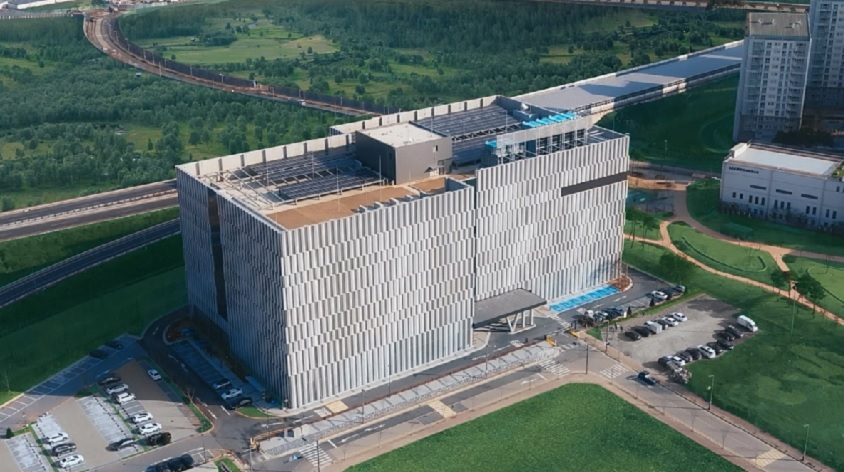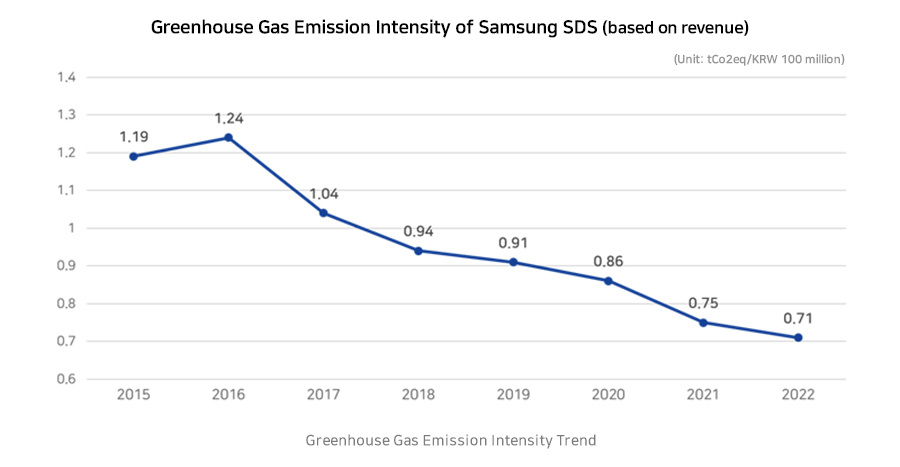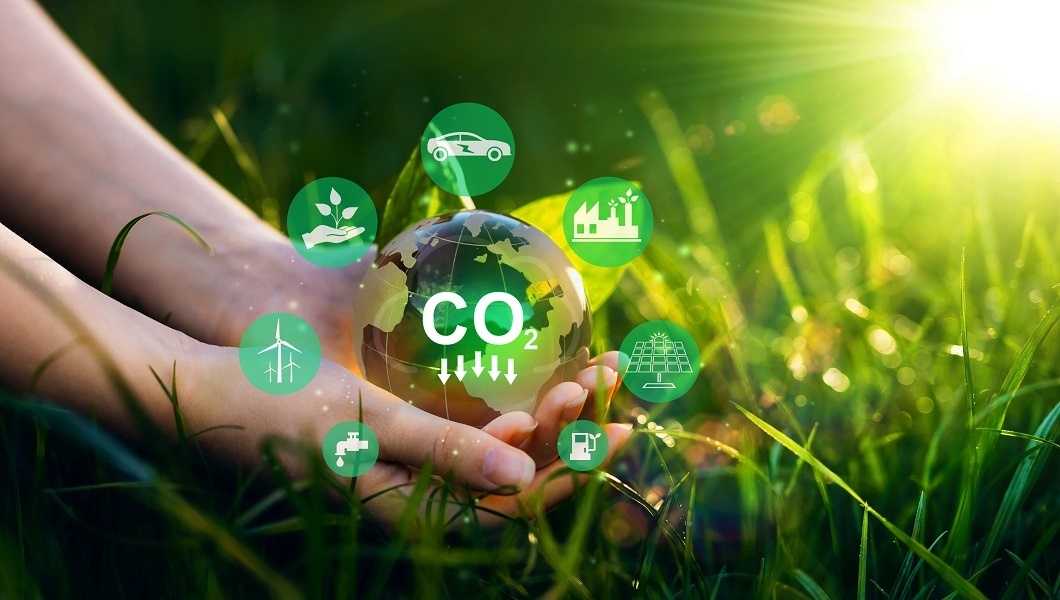
Samsung SDS was the only Korean company to be selected in the 'Business & Professional Services' industry at the 2023 Asia-Pacific Climate Leaders, which was announced in collaboration with the British Financial Times and German market research firm Statista.
+ Asia-Pacific Climate Leaders 2023: interactive listing © The Financial Times Limited 2023.
Samsung SDS’s greenhouse gas emission intensity has decreased every year, from 1.24ton/KRW 100 million in 2016 to 0.75ton/KRW 100 million in 2021 and 0.71ton/KRW 100 million in 2022. Though a growth in revenue generally leads to an increase in greenhouse gas emissions, Samsung SDS has been able to minimize the emission level through autonomous reduction efforts. Also, Samsung SDS has disclosed its Scope 3 emissions—a measure of greenhouse gas emissions occurring outside the business boundaries of a company such as supply chain, upstream transport, and investment—in its sustainability report published each year, while enhancing the methodologies used for such measurement. Moreover, Samsung SDS’s CDP score was B* in 2022, which is higher than the industry average (C) as well as the global average (B-).
*CDP score comprised of a total of 8 grades: A, A-, B, B-, C, C-, D, D-

Among the greenhouse gas emissions of Samsung SDS, Scope 2 emission (indirect emission) accounts for 97%, among which 90% comes from data centers. Scope 2 refers to greenhouse gases that have been released indirectly through the use of energy including electricity and steam. This means that Samsung SDS’s greenhouse gas emissions mostly occur from the use of electricity at data centers. There are largely two ways to reduce Scope 2 emissions: one is reducing the use of energy by raising its efficiency and the other is making a shift from fossil fuels to renewable energy.
The most widely used metric for measuring the energy efficiency of a data center is power usage effectiveness (PUE), which is calculated by dividing the total amount of energy used at a data center by the energy spent by IT equipment within it. The closer this value is to 1, the more energy efficient a data center is. In order to reduce PUE, it is important to decrease the amount of energy additionally consumed for running a data center, such as for the cooling of server rooms. Samsung SDS’s data centers have achieved an optimal level of energy efficiency by enhancing thermos-hygrostat operation through the use of outdoor air cooling and air conditioning simulation and adopting eco-friendly technologies including the installation of a chilling pump inverter. Through such efforts, the Chuncheon data center received a record-high score of 99.05 in the evaluation of “Green Data Center Certification” and accordingly obtained a “Platinum” grade in early 2022. In the case of the Dongtan data center that Samsung SDS recently opened, it is designed to achieve world-class energy efficiency of PUE 1.12, which was possible through the application of the latest green technologies including liquid cooling from the design stage.

As for the transition to renewable energy, Samsung SDS installed solar water heating systems, solar power generators, and geothermal heat exchangers at centers in Suwon, Sangam, Chuncheon, and Dongtan thereby generating around 300MWh of renewable energy annually and planning to continuously increase production in near future. Moreover, Samsung SDS is considering various ways to actively make a shift towards renewable energy to achieve carbon neutrality through the purchase of renewable energy certificate (REC) and the signing of renewable energy power purchase agreement (PPA). In addition, Samsung SDS is initiating a range of activities for reducing greenhouse gas emission at its general business sites other than data centers, such as switching business vehicles to pollution-free cars, installing electric vehicle charging stations, and setting up automatic turn-off system for office lighting.

Samsung SDS plans to continuously expand its efforts to overcome the climate crisis through greenhouse gas reduction.
- Brightics IoT 3.0 with Enhanced Data Processing Technology Listed in Global Market Research Reports
- Brightics Visual Search Acknowledged in Global Market Research Reports
- Samsung SDS Named in Gartner Magic Quadrant for Data Center Outsourcing and Hybrid Infrastructure Managed Services, Global
- Samsung SDS Cloud Security Services Acknowledged as a Major Player in the IDC Report
- Samsung SDS Positioned in Gartner Magic Quadrants for Data Center Outsourcing & Hybrid Infrastructure Managed Services in Asia Pacific and Europe
